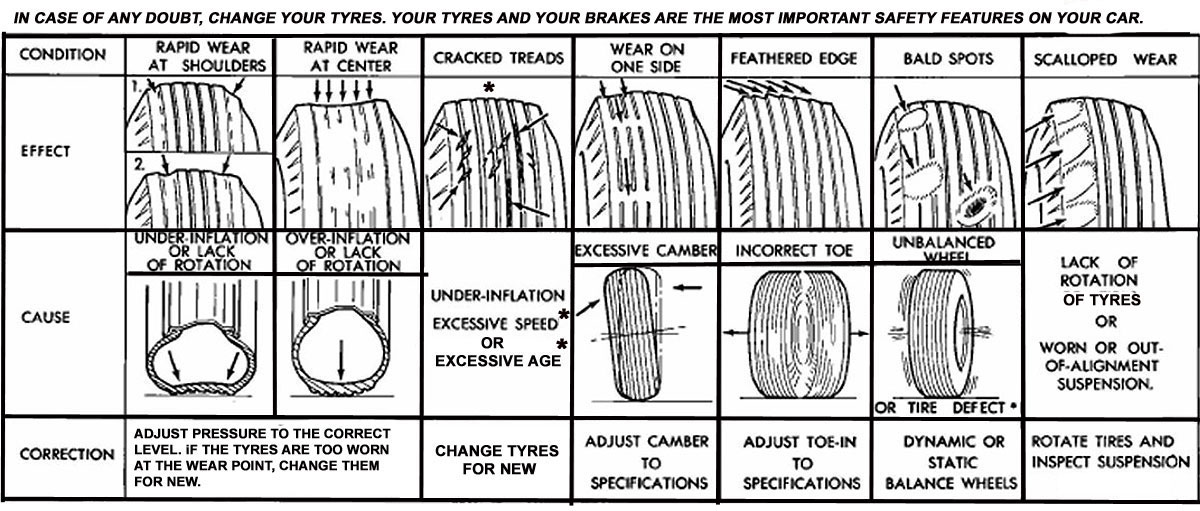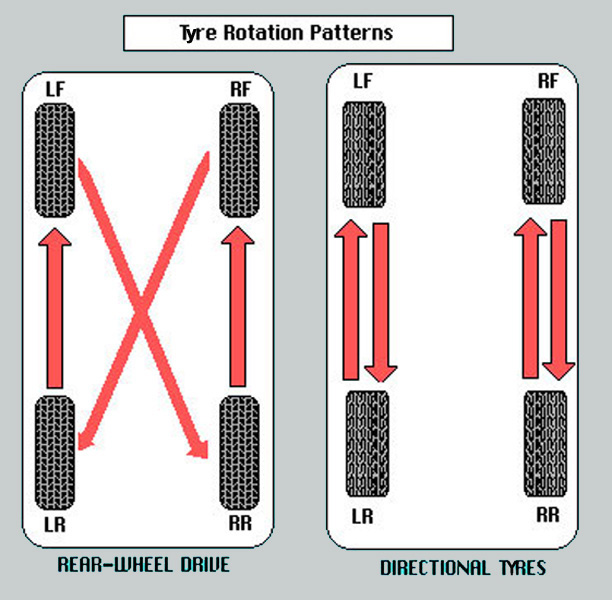
by GoMoG
Tyre technology has been a major player in the development and success of the automobile. Without a compliant, automatically adjusting air cushion between the machine and road surface, how would a car ride feel? How long would a car last? How would it handle? Tyres are the most important suspension component Morgans have and their effect is exagerrated by the Classic Morgans' simplicity. Sadly, in the last 20 years, manufacturers have been reducing the amount of air between rim and road, effectively replacing air with metal. This has not helped Morgans..negating their attempts at improving the suspension by other means
Tyres and their pressure are where I find the most common suspension and handling issues with Morgans. Too little air is dangerous and too much air also, both killjoys. Yet tyre people are always overfilling the tyres, not realizing how light a Morgan is. Tyre make or size has NOTHING to do with the pressure they should be filled with. Think of a trye as being sandwiched between the road and the weight of the car. Being one of the lightest cars in the world, a Morgan hould have one of the lowest tyre pressures in the world as well. As a guide to the right pressure (if you don't wish to beleive the Factory-recommended pressures), the goal is to get the best "tyre patch" on the ground. As you can see on the chart above, too much pressure makes the tyre tread convex and wears the tyre in the center and too little pressure in the tyre makes the tread concave with greater wear on the sides. Each indicate that the amount of tread rubber in contact with the ground has been diminished by the improper pressure, resulting in a loss of traction and prejudiced handling (and if it is too high, prejudiced comfort as well!) The most common of the two Morgan tyre pressure faults is TOO MUCH PRESSURE. This will happen with owners and non-Morgan professionals. These cars will have a harsher uncomfortable ride and have a tendency for their rears to hop or "slide out" in the corners, the only dubious advantgae is that the front steering becomes lighter with the reduced patch and traction.
Any vehicles tyre's air bubble is a function of the tyre's construction, the tyre air pressure and the weight of the car pressing down against the two. The best guide is your little Morgan Car Manual that came with the car. I have learned to set my cold tyre pressure at 21-22 psi. You can increase that to 24-25 psi when using Motorways for long trips, but only because it improves fuel mileage and the sacrifice to handling and comfort is less important on a boring Motorway. As for people who tell you that high pressurs (25 psi +) are much better, nod sagely but ignore them. It is likely that there other vehciles are over pressured as well.
CHECK WHETHER YOU HAVE THE CORRECT TYRE PRESSURE FOR YOUR MORGAN
Morgans have few competitors for lighter weight though they use regular road tyres. This means that GREAT car must be taken to see whytoy have the right pressure YOUR Morgan and not something a tyre dealer figured you should have!! Essentially, checking tyre pressure is to assure yourself your have the best and largest tyre patch on the road surface.
For many years I have used the wet patch method to check my pressure. I tried the "chalk" method and returned to the one below. The trick is to get the tyres wet enough to make and imprint on the paper without wetting the tyres so much as to make an obscure mark.
Instructions| WATCHPOINT More than 50% of the trad Morgans I have encountered have tyre pressure that is way too high. As tyres are the major part of comfort and comportment with these Morgans, one can own one for a lifetime and never truly experience its wonders. Too high pressures wliminate comfort and forces the vehcile to bouce down the road with a unpleasant brittle feeling. Combined with the pre-June 1993 brake proportioning, it forces the car to slide and bounce its rear out in corners. :( |

